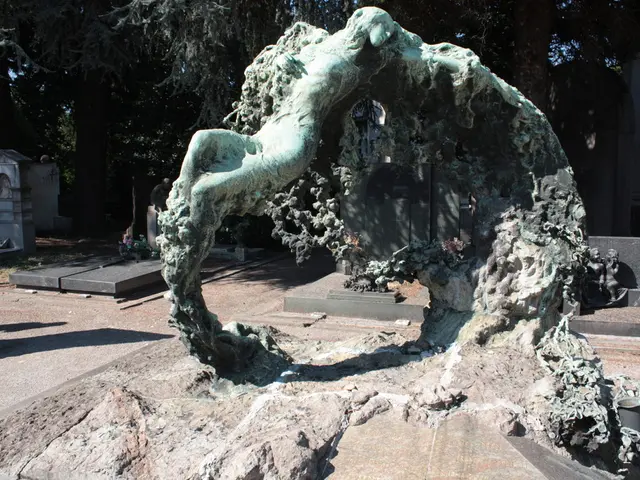Unusual Space Event in Southwestern Germany and Switzerland: Starlink Satellite Re-entry
A mesmerizing display of lights in the evening sky set off a flurry of uncertainty and curiosity in the southwestern regions of Germany and Switzerland earlier this week. Authorities from the Federal Office for Civil Protection and Disaster Assistance (BBK) swiftly quelled any speculation; the mysterious streak of brilliant illumination was attributed to a Starlink satellite crashing into Earth's atmosphere over Switzerland. The information came from the German Armed Forces' Space Situational Awareness Center, as confirmed by a BBK representative.
The Starlink project, the brainchild of SpaceX, led by Elon Musk, aims to provide high-speed internet access worldwide. With an altitude of around 500 kilometers, these satellites are instrumental in SpaceX's current fleet of 5,000 Starlink satellites, targeting a grand total of approximately 42,000. Reportedly, fallen Starlink satellites pose no threat to public safety.
In various cities of Baden-Württemberg, individuals dialed the local police around 9:30 PM, reporting the sight of a fiery celestial object. Police stations in Ravensburg, Constance, and Stuttgart each received these reports, according to their respective officials. "Most likely remnants of a satellite"
While the masses and social media craves believed they had witnessed a meteorite, experts quickly dismissed this theory. "Given the slow pace and method of fragmentation, my bet is on a satellite re-entering space debris or something similar," shared Fabian Mathis, president of the Astronomical Society of Zurich's Lower Region, speaking to the Swiss "Blick." Space specialist Men Schmidt, hailing from St. Gallen, Switzerland, personally observed the event. "A sound explanation would be that it was portions of a satellite or a rocket," he hypothesized.
As the space race intensifies, an emerging concern is the increased threat of space debris. Failed satellites or other debris falling beneath an altitude of 600 kilometers are expected to return to Earth within a few years, according to NASA, typically disintegrating upon re-entry. Currently, Earth orbits an estimated 20,000 pieces of space debris, including non-functional satellites and spent rocket boosters; many of which are no longer operational.
This space debris also poses a significant hazard to space travel. The Chinese space station "Tiangong" ("Heavenly Palace") was struck by space debris a few months ago, necessitating repairs. The International Space Station (ISS) must also occasionally steer clear of debris.
Space debris management: roles and responsibilities
Manufacturers, space agencies, and stakeholders must consider end-of-life plans for satellites. SpaceX's Starlink satellites are designed to burn up fully when re-entering the atmosphere, with the company pledging to de-orbit its satellites proactively. The European Space Agency (ESA) and NASA have offices and policies to address orbital debris, as well as regulatory bodies like the UN's Federal Communications Commission, which requires communications satellite launch applicants to submit debris mitigation plans.
Impact on Starlink Satellites
Starlink satellites are designed to remain in low Earth orbit for around 5 years before being de-orbited and allowed to burn up in the atmosphere. Once their lives expire, the satellites lower their altitude using electric thrusters, with atmospheric drag further slowing them down until they fall from orbit.
The re-entry of satellites such as Starlink contributes to stratospheric pollution, as researchers analyze the potential consequences. The early adoption of proactive measures can completely prevent detrimental effects. The particles resulting from debris re-entries significantly increase the frequency of stratospheric pollution, and scientists are actively monitoring its impact on atmospheric chemistry.
Risks and Consequences
Air travel is at risk as the threat of falling space junk collisions increases, as researchers warn in a recent study. The likelihood of an incident is low, but debris can cause delays or additional financial costs for airlines. Regulatory and diplomatic measures are necessary to adhere to continued space access while protecting domestic and global interests, according to the European Parliament.
In conclusion, the increased threat of space debris poses significant risks to satellite operations and space travel. The re-entry of satellites, such as Starlink, contributes to stratospheric pollution while raising concerns about environmental impact. Efforts to mitigate these risks and adopt proactive measures are necessary for ensuring the sustainability of space activities.
References
[1] European Space Agency (ESA):
[2] NASA:
[3] European Space Agency (ESA):
[4] & [5] European Space Agency (ESA):
[6] NASA:








